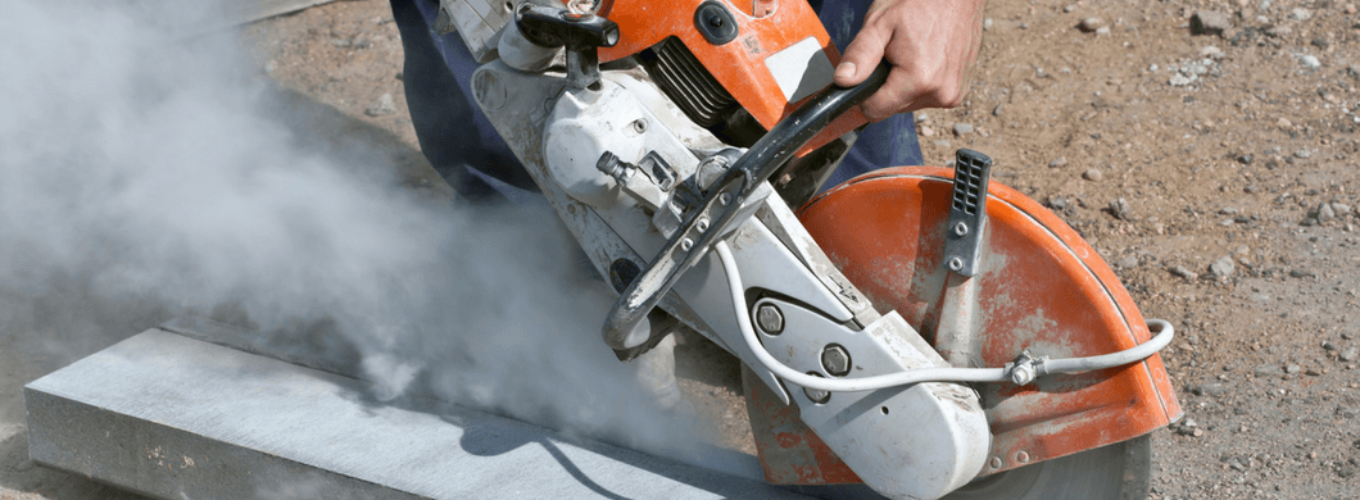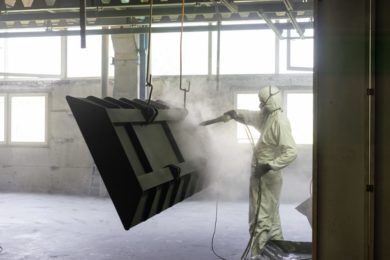Crystalline silica is a component of materials which have an abundance of uses in industry and are a vital component in many things used in our everyday lives. It is impossible to imagine houses without bricks, mortar or windows, cars without engines or windshields, life without roads or other transport infrastructures and everyday items made of glass or pottery.
However, as useful and necessary as silica is to modern life, in its natural state, silica dust can be very damaging to the human respiratory system. Prolonged inhalation of respirable crystalline silica may cause a specific type of lung damage called silicosis. In fact, silicosis is the world’s oldest known occupational disease.
At General Kinematics, our engineers have design solutions that automate your process and keep silica away from your operators. The VIBRA-DRUM® Sand Casting Conditioner, as well as the SPIRA-COOL® Casting Cooling Conveyor, and other enclosed GK systems, keep silica dust out of the air and keep you from the danger.
Who Does this Impact?
As of Sept 2017, OSHA has created new standards for workers who generate silica dust through cutting, grinding, and blasting, as well as the people who work with silica to manufacture products. OSHA’s previous permissible exposure limits (PELs) for silica, based on studies from the 1960s and earlier, were outdated, inconsistent and did not adequately protect worker health.
The new PEL limits worker exposures to 50 micrograms of respirable crystalline silica per cubic meter of air averaged over an eight-hour day. The old standard was 100 micrograms for general industry and 250 micrograms for construction and maritime worksites. Table 1—Specified Exposure Control Methods When Working With Materials Containing Crystalline Silica, explains engineering controls, work practices, and respiratory protection specifications based on job tasks.
The main industries affected include:
- Construction
- Glass manufacturing
- Pottery products
- Structural clay products
- Concrete products
- Foundries
- Dental laboratories
- Paintings and coatings
- Jewelry production
- Refractory products
- Landscaping
- Ready-mix concrete
- Cut stone and stone products
- Abrasive blasting in:
- Maritime work
- Construction
- General industry
- Refractory furnace installation and repair
- Railroads
- Hydraulic fracturing for gas and oil
- Asphalt products manufacturing
New OSHA Silica Standards
The standards for general industry and construction are among the broadest that OSHA has issued, regarding the number of industry sectors and establishments potentially affected. 2.3 million workers and 676,000 establishments will likely be affected by the new OSHA standards. The majority of these workers, about 2 million, are in the construction industry.
Because the costs are spread over a large number of affected establishments and workers, OSHA’s economic analysis indicates that the silica rule will not have a significant economic impact on firms, nor a significant effect on jobs.
The rule is expected to result in annual costs of about $1,524 for the average workplace covered by the rule. A firm with fewer than twenty employees will be less, averaging about $560. However, the rule is estimated to provide average annual net benefits over the next 60 years of $3.8 to $7.7 billion in medical savings.
Despite the projected low implementation costs and high benefits to the new standards, in April and May of 2016, the AFL-CIO, North America’s Building Trades Unions (NABTU), and several manufacturing-focused labor groups filed objections.
For the construction industry, in particular, the new rules require contractors to:
1. Develop a written silica exposure control plan.
2. Designate someone to implement the plan.
3. Adjust housekeeping practices to maximize control of silica dust.
4. Provide medical exams every three years to employees who are exposed to silica to the point of having to wear a respirator for 30 days or more each year. The exams must include lung-function tests and chest X-rays.
5. Train workers on how to limit exposure to silica.
6. Keep records of workers’ silica exposure and related medical treatment.
Because of the increased monitoring and exposure controls, the labor groups ask a judge to determine whether OSHA adequately justified its decision for the new standards and whether complying with the exposure limit is technologically and economically feasible. Employers also want a judge to consider whether OSHA’s preference for reducing silica exposure through engineering controls that limit the spread of respirable silica, such as wet cutting concrete and using indoor filter systems instead of workers using respiratory protection, is adequately justified by the evidence OSHA collected for the rulemaking.
Getting the Courts Involved
On December 22, 2017, a three-judge panel of the U.S. Court of Appeals for the D.C. Circuit issued an opinion that denied challenges to all but one provision of the OSHA standards. Industry groups asked the D.C. Circuit to review five issues, including the technological feasibility of the rule for three distinct sectors—foundry work, hydraulic fracturing, and construction.
The panel upheld the rule against every challenge. Several worker unions also challenged two aspects of the rule. The panel rejected one of these challenges but did agree with the contention that OSHA did not adequately explain why the rule provides no medical removal protection for workers who have developed health problems from job site silica exposure. Accordingly, the panel remanded that part of the rule to OSHA for “further consideration.”
Because the new PEL standards are much lower than the previous standards, many companies that did not fall under the previous OSHA standards, are now struggling to determine if they comply with the new standards. To determine this, air sampling must be completed by a Certified Industrial Hygienist, and those samples must be tested by an accredited testing laboratory using ISO/IEC Standard 17025:2005 for Crystalline silica analyses. Those companies that produce more silica dust than the allotted standard must then install the recommended engineering and personal safety controls to protect their workers.
In addition, employers for all operations in general industry and maritime are required to:
– Comply with all obligations of the standard, with the exception of the action level trigger for medical surveillance, by June 23, 2018.
– Offer medical examinations to employees exposed above the PEL for 30 or more days a year beginning on June 23, 2018.
– Offer medical examinations to employees exposed at or above the action level for 30 or more days a year beginning on June 23, 2020.
Because controls for respirable crystalline silica in hydraulic fracturing are still in development, the rule allows hydraulic fracturing employers additional time to implement engineering controls to take advantage of emerging technologies. Those employers do not have to implement engineering controls to limit exposures to the new PEL until June 23, 2021, three years later than other general industry and maritime employers. From June 23, 2018 to June 23, 2021, hydraulic fracturing employers can continue to have employees use respirators when exposures exceed the PEL.
More Information from OSHA & GK
OSHA’s Fact Sheet on the new rules for General Industry and Maritime will provide further details and allow employers to tailor solutions to the conditions in their workplaces. The OSHA document Frequently Asked Questions: Respirable Crystalline Silica Rule will give background and details about the new rules.
There are many misconceptions about vibratory equipment when it comes to the issue of silica. Here at GK we are dedicated to the health and safety of those who use our equipment. That commitment to safety is engineered into every piece of our equipment. Through enclosed and flat stroke units GK can be a critical factor in minimizing crystalline silica in your facility. For a complete line of General Kinematics’ enclosed equipment or to discuss how GK can assist your company with processing equipment that meets or exceeds the new crystalline silica regulations, call 815-455-3222 or go to https://www.gkfoundry.com/.









